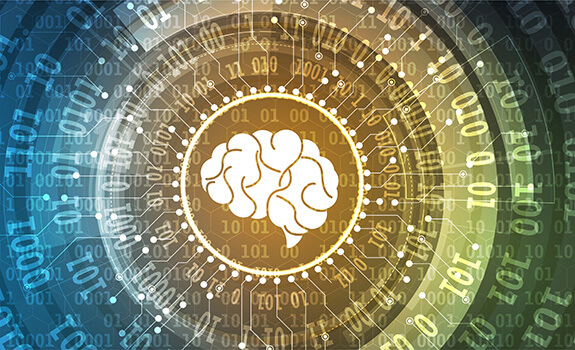October 22, 2024
The Large and Growing Armamentarium

By Dale Bredesen, M.D., Chief Science Officer for Apollo Health
We are living in an era of rapid progress — just a decade ago, there was nothing known that could prevent and reverse cognitive decline. Now we have a large and growing armamentarium, so knowing which diagnostic (tracking) methods to use and then targeting them with the appropriate therapeutic modalities can make the difference between progression to end-stage dementia and return to normalcy. For those who start early, with prevention or early intervention, the dementia of Alzheimer’s is now, for the first time, optional. And seeing this, day in and day out, makes my day, every day.
Diagnostics / Tracking
● Blood tests — with high-sensitivity p-tau 217, GFAP, and NfL, we can see Alzheimer’s coming prior to any symptoms and avoid it for virtually everyone.
● ASL (arterial spin labeling) — this is an MRI technique that reveals blood flow, and shows a specific pattern in Alzheimer’s, as well as revealing improvement when treatment is successful.
● Electrophysiology for status — instruments like those from Evoke or Neurocatch allow us to determine whether treatment is going in the right direction.
● Oral and gut microbiomes — there are numerous changes that can be identified in these microbiomes (such as high levels of P. gingivalis or T. denticola in the oral microbiome, or Candida dysbiosis in the gut microbiome), and these allow us to focus treatment and achieve better outcomes.
● Guidance from genetics and epigenetics — programs such as IntellxxDNA, 3×4 Genetics, and TruDiagnostic (this last for epigenetics rather than genetics) are improving our understanding of which therapeutic targets are of the highest priority, thus allowing enhanced outcomes.
● Wearables — wearables such as Apple Watch, Oura Ring, Garmin, and Fitbit are proving invaluable in optimizing many basics such as sleep stages, oxygen saturation, heart rate variability, and exercise fitness, helping to improve the success of the protocols.
Treatment Modalities
Here is just a partial list of the remarkable therapeutics — none of which is a cure, but each a potentially important piece of the optimal personalized protocol when matched up with the appropriate profile:
● Mitochondrial support — there are now many agents readily available, with multiple mechanisms to improve mitochondrial function in Alzheimer’s, such as urolithin A (a postbiotic that increases mitochondrial turnover, leading to new and more functional mitochondria), PQQ (which increases mitochondrial number), methylene blue (which allows electron transfer), NAD+ (via nicotinamide or NMN or nicotinamide riboside), and many others.
● Increasing the neurotransmitter acetylcholine — this neurotransmitter is key for memory (and it is the cholinergic neurons that respond to NGF), and can be increased with many supplements, such as citicoline, alpha-GPC, and huperzine A.
● Increasing BDNF — Brain Derived Neurotrophic Factor is intimately related to Alzheimer’s-related signaling, and it can be increased with whole coffee fruit extract, exercise, and ketosis, among other modalities.
● Increasing NGF — Neuronal Growth Factor is the key trophic factor support for the cholinergic neurons that are required for memory formation and are lost in Alzheimer’s disease. Supplements like ALCAR and Hericium erinaceus (lion’s mane mushroom) increase NGF in the brain.
● Detoxification — there are so many modalities for detox, from glutathione (IV or intranasal or oral or inhaled) to sauna to binding agents to crucifers to sulforaphane to dozens of others—this is a whole field unto itself.
● Resolvins — these omega-3-related molecules, discovered by Prof. Charles Serhan at Harvard, help to resolve ongoing inflammation.
● Homotaurine — this is a supplement available over the counter, which inhibits the oligomerization of amyloid-beta, and seems to be most helpful in those who are ApoE 4/4.
● Pectasol — this is a supplement that reduces inflammation via Gal-3.
● TB006 — this is a promising new antibody, now in trials, that binds to Gal-3 and quiets microglial inflammation, as well as reducing amyloid-beta oligomerization.
● Detoxification — there are so many modalities for detox, from glutathione (IV or intranasal or oral or inhaled) to sauna to binding agents to crucifers to sulforaphane to dozens of others — this is a whole field unto itself.
● Exogenous ketones — these increase brain energy, and years ago, Dr. Mary Newport showed that her husband’s Alzheimer’s improved markedly with coconut oil. Other ways to increase ketones include MCT oil, ketone salts, ketone esters, ketogenic diets, and fasting.
● EWOT (exercise with oxygen therapy) — this has the dual advantage of increasing cerebral blood flow and oxygenation, so that some people find a marked improvement in cognition with EWOT.
● Recognition and treatment of sensitive patients — it has become clear that nervous system changes involving the limbic system, vagal tone, and mast cell activation are common in cognitive decline, and methods to address these changes — such as DNRS, the Gupta program, and HeartMath — are proving important in reversing these alterations and improving cognition.
● Plasma exchange — especially in those with autoimmunity or systemic inflammagens, plasma exchange has been effective in reducing cognitive decline.
● IVIG — this is another method to reduce systemic inflammation.
● Brain stimulation — there are now many methods to stimulate the brain productively, such as PBM (photobiomodulation), brain training, TCMS, microcurrent, MeRT, and others.
● PoNS (portable neural stimulator) — this promising modality has shown some success in patients with MS and those with Parkinson’s, and ongoing studies should determine whether it may be helpful in at least some patients with Alzheimer’s.
● ADRCs (adipose-derived regenerative cells) — these stem cells utilize numerous mechanisms such as immune optimization and trophic support to treat cognitive decline.
These are just a few of the many, many therapeutic options now available. If all of us would start early and work with well-trained practitioners, we truly could reduce the global burden of dementia.




